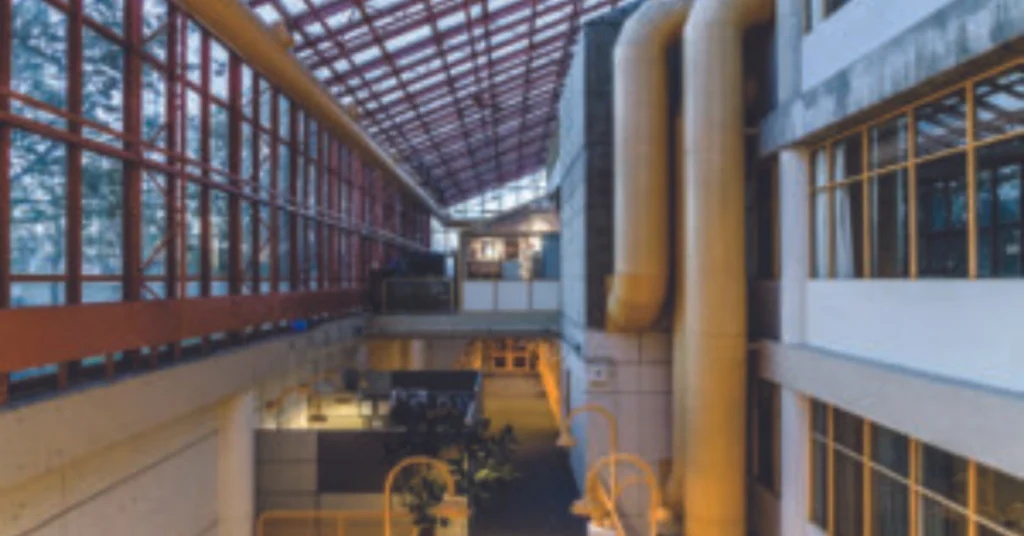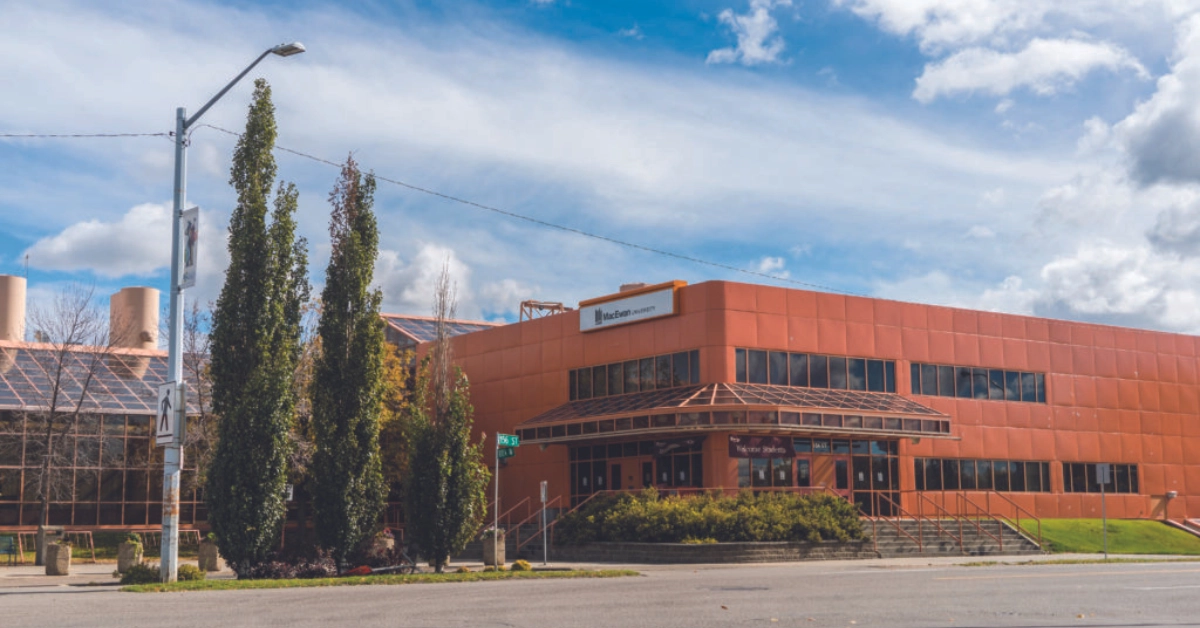The first day Denise Roy started working at the Centre for the Arts and Communications, she walked through the parkade and saw what struck her as a rather unusual art exhibit.
“There’s a series of pails all down the centre, arranged. And I remember coming in from the parking lot and I thought, ‘isn’t that an interesting installation?’ because I think it’s an artwork,” she said.
Turns out, it wasn’t artwork at all.
“I walk a little further and I hear ‘drip, drip, drip’ and then I looked and I went, ‘Oh. It leaks.’”
End of an era
The current Centre for the Arts and Communication (CFAC) building is retiring from student life after 35 years. While the building’s age highlighted its charm, the challenges that came with it were numerous and sometimes difficult to overcome.
The new Centre for Arts and Culture building is slated to open in fall of 2017. The five-storey addition to MacEwan’s City Centre Campus will integrate the current arts campus into a central downtown location, providing the faculties with new technology and bigger performance spaces.
As the building begins its final year as part of the MacEwan University community, many of the staff and students have mixed feelings about the big move. Roy, Dean of the Faculty of Fine Arts and Communications, has been with the building for nearly 27 years, and there are certainly aspects she is going to miss.
“The physical space and the orange-ness of it … you can’t separate the color from the building. I love that about it,” she said. “It’s a little bit unusual, it’s a little bit funky, and that’s how we are, so it’s a really good fit here.”

Both the architecture and location have contributed to the unique vibe on the CFAC campus. Roy explained that while isolation from the other campuses has created some problems for the students, it has also helped them pursue the arts. The fact there’s nowhere else to go fuels collaboration and practice, something which has become a mainstay of the campus’ community.
“You are, here, surrounded by the art. You can’t not encounter it because the students play their instruments in the washroom, in the stairwells, all over the place — there’s always work,” Roy said.
“I think it’s just cool in that way. That combination of attitude and creativity and commitment that the students bring is fantastic, and it’s so immediate here — you trip over it.”
Significance in the community
Allan Gilliland, chair of the music department, has been at CFAC for 19 years and recognizes the contribution the building has shown to the arts ever since he was a University of Alberta student travelling to MacEwan to play.
The building was originally designed to have more amenities than it ended up with, but budget cuts meant certain things couldn’t be entirely fleshed out. However, the campus still found ways to make sure students got what they needed.
“We didn’t have a room big enough to rehearse a big band — a small room is really hard on the ears when the ceilings are low — so they took one of the rooms on the first floor and they actually dug down further than the rest of the building to give it a high ceiling,” he said.
“That’s why we call it ‘The Pit.’ I remember doing rehearsals in there for the first time and really falling in love with the building and the faculty here.”
In fact, the connection that students and faculty have with this building is so strong that, like Gilliland and Roy, many spend decades of their life there. Over the years, as members of the community have passed away, they’ve chosen CFAC for their memorial services because of its importance to them — something which few campuses can boast.
“We’ve had, over the years, a number of very moving celebrations of life for faculty members and staff, and those people had been very explicit that this is the place they wanted to have their celebration,” Roy said. “It speaks to the community that’s here … people come and people stay.”
The campus was certainly loved during MacEwan’s tenure there, but the building is old and starting to become run-down. A new space will allow the arts programs to grow and will also benefit students.
Upsides
Before, things like student residence were more difficult for students based at the arts campus to access, due to the distance from City Centre Campus. Electives were also limited because of the small student population, but options will increase and benefit both sides when the two campuses merge.
The current Centre for the Arts and Communication (CFAC) building is retiring from student life after 35 years.
“We’re hoping that students are going to come our way and start to play in our ensembles, so audition for the big band and other things like that, (and) take some of our musicology courses,” Gilliland said.
He also hopes that being close to downtown will open up opportunities for a relationship with the University of Alberta and other art programs in the area, both in regards to production as well as audience.
“Being connected to the rest of the university is going to transform us,” Gilliland said.
As for the old campus, its days encouraging artists are far from over, as the City of Edmonton has bought the building and proposed to continue using it as a community arts centre.
“(The city) bought it, they were going to try and keep the spaces and rent it out to smaller theatre and dance companies and music companies,” Gilliland said. “I hope the building lives on with the spirit of the arts in it.”
Cover photo by Toni Zendran.





0 Comments